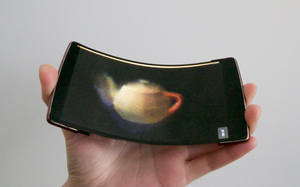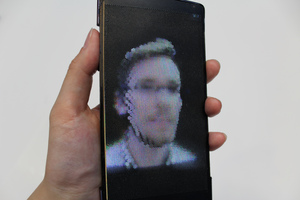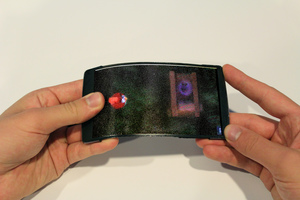Not satisfied with your smartphone?
The device, which has a 1920 x 1080 full HD OLED display is truly flexible and that flexibility can be used as a control for applications, in itself a significant accomplishment, but the addition of an array of 16,000 fisheye micro-lenses, allows the viewer to see images from any angle by turning the phone. The ‘bend’ function of the device can be used to control the Z axis (depth), while using normal touch for the X & Y axes. This allows users to edit 3 dimensional models by touch, rather than by entering coordinates or by dragging objects in only two dimensions.
While we rarely comment on display ‘lab’ advances, as they tend to be far removed from commercial production, this project seems to have at least put OLED, flexibility, and holography all together in one device, a singular accomplishment. While we have not heard of a commercialization timeline yet, and the holography portion of the display is still low resolution, the potential is quite interesting, and given the holographic array is produced on a 3D printer, we would expect resolution to continue to improve, as the Holoflex project continues it development. Soon you will be able to see if the back of your haircut was as good as the front without a mirror…https://youtu.be/UDOkwJTPgCc for the 1 minute video



 RSS Feed
RSS Feed